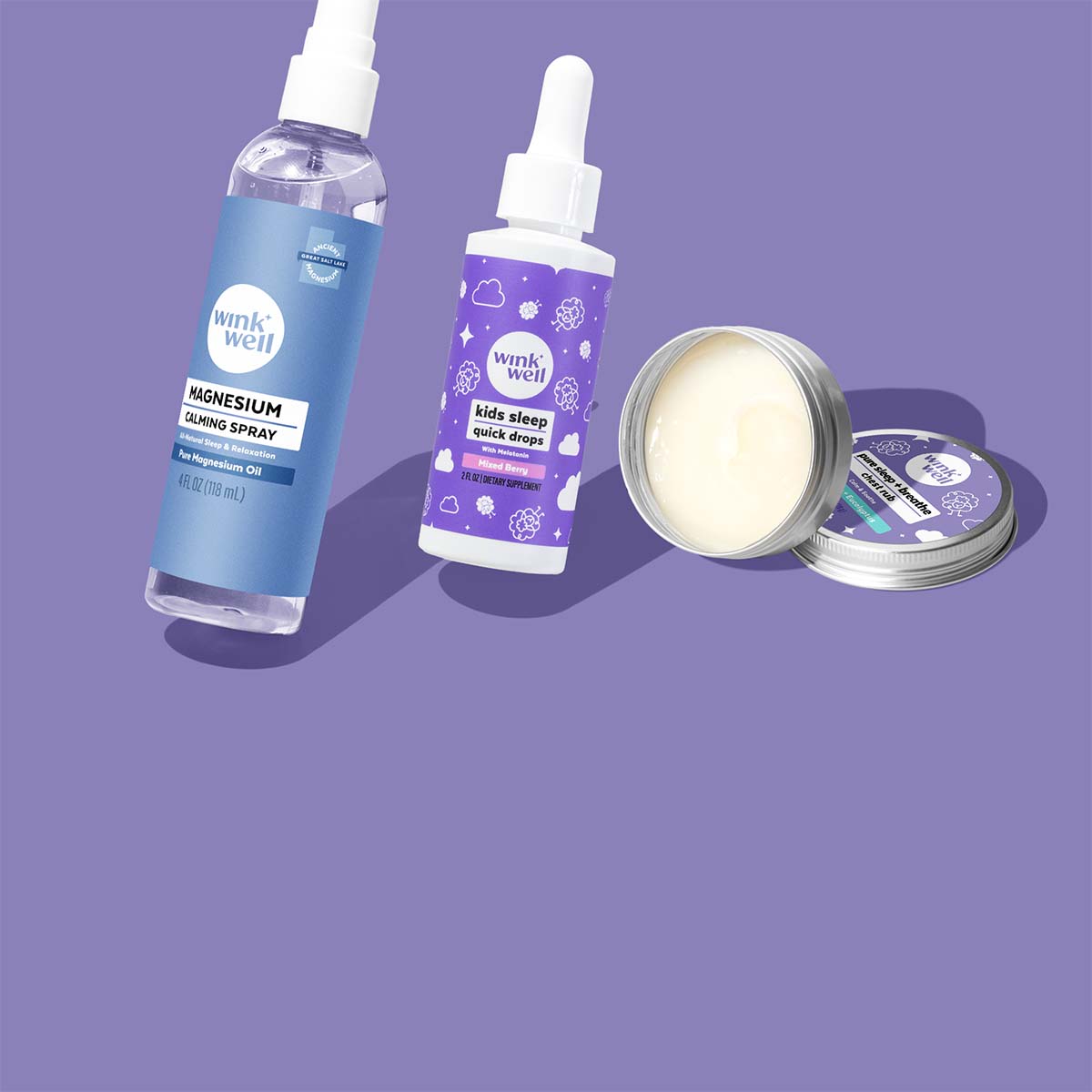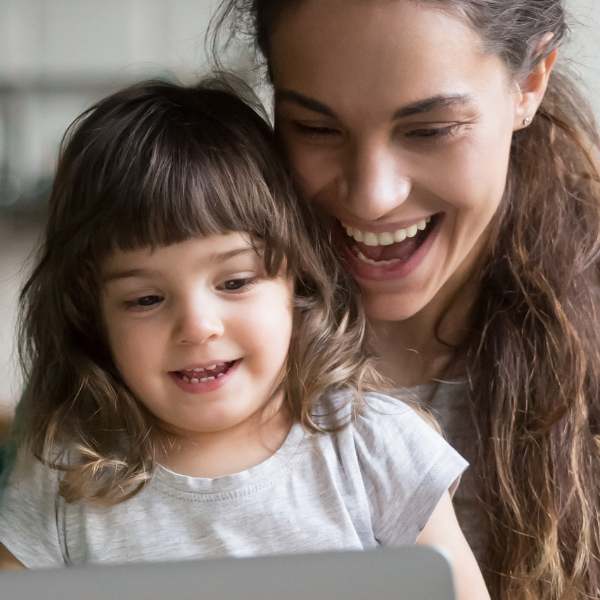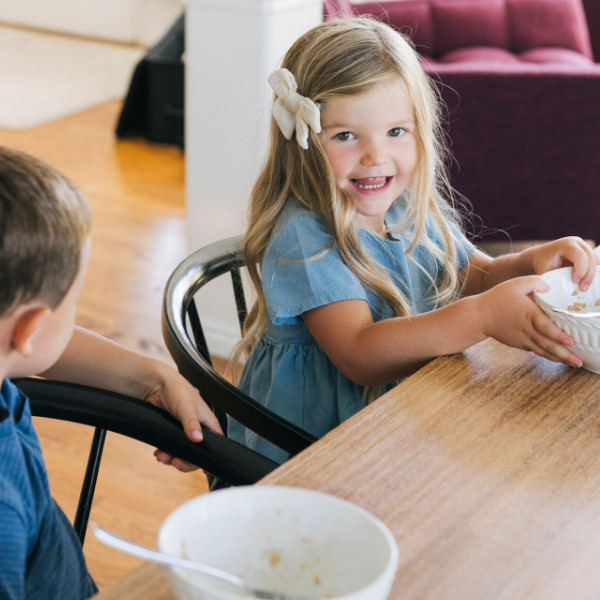What is blue light?
Back in the day our earliest ancestors only had access to light from the sun.
Sunlight is made up of all sorts of colors (red, orange, yellow, green, blue, indigo, and violet). When they all combine, you get the white light we see.
Each color has a different energy and wavelength. For example, rays on the red end have longer wavelengths and less energy and blue rays have shorter wavelengths and more energy.
Nowadays, blue light is very common (with the largest source of blue light still being sunlight).
But other sources include:
- Fluorescent light
- CFL (compact fluorescent light) bulbs
- LED light
- Flat-screen LED televisions
- Computer monitors, smartphones, and tablet screens
You’re actually exposed to more blue light from the sun BUT the main concern with blue light from screens is the close proximity of the screens (especially computers, phones, tablets) and the length of time looking at them.
The National Eye Institute funded a study that found that children are more vulnerable than adults because their eyes absorb more blue light from digital devices.
That’s worth repeating: Children are more vulnerable than adults because their eyes absorb more blue light!
Let’s get into it.

How Does Blue Light Affect the Eyes?
Blue light scatters more easily than visible light which reduces contrast and can contribute to digital eye strain.
Since blue light penetrates deep into the eye (all the way to the retina), more exposure can lead to more issues.
Those issues being: burning, sore and tired eyes, headaches, blurred vision, and trouble focusing.
Studies have also linked frequent screen time, a lack of natural light exposure, AND the use of fluorescent desk lamps to increasing rates of myopia (nearsightedness) among children.
That means all that screen time has short-term and long-term effects on the eyes.
Sadly, there’s more…
Blue Light’s Impact on Development, Health, and Sleep
Blue light exposure (watching television, playing on a tablet, looking at the phone) close to bedtime confuses the brain and disrupts your body’s natural body clock.
You see, there’s something called melatonin that our body produces. It’s triggered by darkness and lets our bodies know that it’s time for bed.
We have an entire blog focusing on melatonin, here.
Blue light from screens is like the flashing neon lights on the side of the road that catches your attention and invite you to come in OR in this sense, to stay awake.
Once again, children are way more affected than adults. One study found that melatonin levels of children were suppressed twice as much as adults when exposed to the same level of light.
What other problems are we seeing from blue light:
- Learning Issues: Children who spend more than 2 hours a day using screens have been shown to score lower on thinking and language tests and are 8x more likely for attention deficit and hyperactivity disorder.
- Mental Health: Blue light exposure messes with the body’s natural rhythms and stimulates the brain. We already know it messes with sleep, which also has a major influence on mental health.
- Weight Gain: More time sitting in front of screens means less time being active. Higher artificial light exposure has been shown to contribute to increased BMI. More time indoors means less time outside.
Blue Light Benefits?
Everything in moderation, right?
Since we are exposed to blue light from the sun, there’s really no way to avoid it. And, we don’t want to, at least not completely!
Blue light boosts alertness, helps memory and cognitive function, and elevates mood.
It regulates the circadian rhythm (the body’s natural wake and sleep cycle).
Sunlight is important for the growth and development of the eyes and vision in children.
Sometimes we hear blue light and we automatically think “screens,” and think about all of the negative things stated above ^^^.
Just don’t forget about the importance of sunlight!
Reducing the Negative Effects of Blue Light
Technology and screens are amazing and they are here to stay. So, how can you build some great Blue Light Best Practices 😉 for your family?
Here are a few ideas:
- Blue Light Blockers: Find some glasses for you and your kids to put on while your screen timing.
- 20-20-20: 20-second breaks to view something 20 feet away every 20 minutes.
- Eye Drops: This one might sound weird but when you stare at a screen you’re less likely to blink, which can dry out your eyes. Keep those eyes moisturized!
- Screen Time Limits: Talk with your family and come up with guidelines on screen time. No screen time (outside of school and work) on certain days of the week? 30-minute free screen time daily? Do what works best for you.
- Go Outside: Get the right blue light by getting outside in the sun (don’t forget your SPF). You’ll have more time since you’ve set screen time limits.
- Melatonin: This is for when you still need help to fall asleep (and stay asleep) at night. Get your circadian rhythm back in check.
- Blue Light-Free Light Bulbs: Limit the blue light in your house by replacing your bulbs with blue light-free options.
Help your kids develop great Blue Light Practices and teach them how to have fun without a screen!
Their eyes will thank you!







Leave a comment
All comments are moderated before being published.
This site is protected by hCaptcha and the hCaptcha Privacy Policy and Terms of Service apply.